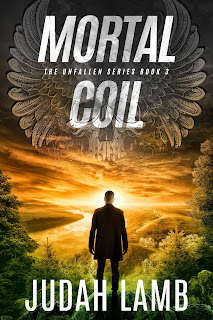Mystery, Police Procedural,
Date Published: March 9, 2021
Publisher: Fedora Press
Fans of iconic LAPD homicide Detective Harry Bosch will feel right at home with homicide Detective Howard “Howie” Drew. Don’t miss Omerta, the first book in a brand new police procedural series set in the City of Angels.
For a homicide detective, a day on the job means hunting killers while trying not to get killed. If you’re a homicide detective in Los Angeles, it also means dealing with the most overwrought, desperate, and deluded criminals anywhere. When you’re a brand new homicide detective spending your days and nights in the gritty underbelly of the city that never sleeps with a tetchy veteran murder cop for a partner, you must keep your cool and your wits about you when the bodies start hitting the floor.
Putting the pieces together when someone shoots to death execution-style a semi-famous Hollywood screenwriter with mob ties is Howard Drew, recently promoted to Detective II and transferred into West Bureau homicide. Just when Drew and his veteran murder cop partner and mentor Detective Rudy Ortega think they are making progress in solving the murder, the leads dry up and the case goes cold. But on the mean streets of LA, there are always plenty more murders to investigate.
Drew and Ortega quickly pivot to investigating the rape-murder of a twenty-two-year-old stripper and aspiring actress. They spend their days chasing down leads in West LA while at the same time battling the inefficient LAPD bureaucracy and trying to coax the support they need to solve cases from the department’s overworked and understaffed Scientific Investigation Division. From their squad room at West Bureau, they see the glamour city for what it is: a sprawling metropolis where the tedious is dangerous and the dangerous is tedious.
Other Books in the Howard Drew Series:
Howard Drew Novels, Book 2
Publisher: Fedora Press
Coming September 2021
When a mother and her young daughter are found dead of carbon monoxide poisoning in a car parked at an overlook off a Hollywood freeway, it appears they are victims of a culturally driven parent-child suicide. LAPD Detective Howard Drew faces his first real test as a new lead homicide investigator as he follows a twisted trail of clues to find the truth in his most challenging case yet.
The Pendulum is the second novel featuring Detective Howard Drew in a new fast-paced police procedural series set in Los Angeles that crime fiction fans won’t want to miss.
When a 3 A.M. callout sends West Bureau homicide Detective Howard Drew to an overlook above Hollywood Bowl, he finds an Asian woman and her six-year-old daughter dead inside a vehicle with a garden hose running from the exhaust pipe into a rear window. The initial evidence points to the cultural practice called oyako shinju in Japan, a ritual child-parent suicide committed after the woman was shamed by her husband’s adultery.
And as the truth emerges, it becomes more and more apparent that things may not be as they appear. Drew and his new partner, Detective Cici Ruiz, suspect they are being misled by someone very deceptive... very cunning... and very deadly who staged the scene to look like oyako shinju. As the detectives dig to uncover the truth, the pendulum of opinion swings back and forth. Was it child-parent suicide? Or was it a double-homicide staged to throw the homicide investigators off track?
Crime fiction author Larry Darter has created a dark, fast-paced suspense thriller filled with stark realism that cuts to the very core of the crimes real life LAPD homicide detectives face. Once you start reading, there’s no turning back.
It was Christmas Eve. Los Angeles Police Department’s West Bureau homicide detectives Rudy Ortega and Howard Drew snaked through the light Sunday traffic in a blue Ford Crown Victoria. Ortega, the driver, exited the San Diego Freeway on Sunset Boulevard. They cruised east through Bel Air, past the estates of Beverly Hills, and then headed up Benedict Canyon Drive, climbing the twisting road past clouds of pink and white oleanders and blood-red bougainvilleas cascading over fences. They passed steep olive-drab hillsides, sheathed in scrub, and studded here and there with live oaks.
The homes in the neighborhood bordered canyon roads, and the backyards skirted towering bluffs, shaded by cypress, sycamores, and an occasional redwood. Benedict Canyon offered the best in Los Angeles living, making it a popular area among successful film actors, directors, and musicians. The commute down to the city was short, and the canyons provided rural-like oases for the residents. The smell of sage wafted through bedroom windows, the houses hovered above the smog, and coyotes roamed the foothills and howled at night.
When Ortega pulled off the road and parked the car at the address on Benedict Canyon Drive, the detectives found a rustic wood-shingle bungalow that seemed out of place in the fashionable district on the edge of Beverly Hills. It appeared the builders had shoehorned the modest cottage into an inadequate space between the busy road and an overgrown hillside.
Ortega and Drew headed up a concrete walkway toward the front door that traversed a weed-choked lawn, bracketed by dried out hydrangeas and emaciated Japanese boxwood.
Rudy Ortega, who would turn fifty-five in the spring, was the second oldest detective in the West Bureau homicide unit and planned to retire before the end of the new year. He had spent twenty-five years as a detective, the last seventeen as a homicide investigator. Ortega, a stylish dresser with coiffed silver hair, wore a tailored gray Giorgio Armani sharkskin suit, a white starched shirt, and a blue Stefano Ricci silk tie with printed checks. Ortega was mentoring Drew in the craft of murder investigations.
Howard Drew, a thirty-three-year-old eight-year veteran of LAPD and a recently promoted Detective II, had transferred to West Bureau homicide after three years as a burglary/theft detective at Hollenbeck. Drew wore a more modest Brooks Brothers navy pinstripe suit with a store brand white shirt. He had purchased the suit on sale off the rack at a Nordstrom outlet. He wore his brown hair in the high and tight military variant of the crew cut, with the back and sides of his head shaved to the skin and the top blended or faded into slightly longer hair. Drew had become accustomed to the style during his four years in the U.S. Army while serving in the 3rd Brigade Combat Team, 2nd Infantry Division. Howard wasn’t a tall man. He stood two inches short of six feet and was on the lean side because he was a dedicated runner. His brown eyes were serious and seldom revealed any emotion.
“This isn’t what I expected,” Ortega said. “This place is only a mile from the Cielo Drive mansion where the Manson family murdered Sharon Tate and her friends.”
“Yeah, it’s a dump,” Drew said, “especially by Beverly Hills standards.”
Sergeant Martin Maxwell and two uniformed West L.A. patrol officers met the detectives outside the front door.
“What’ve we got, Max?” Ortega said.
“Barnett and Tomlinson responded to a radio call of an open door,” Maxwell said. “They found the front door closed but unlocked. When they entered the residence, they discovered the body of a deceased female on the floor in a bedroom with a pool of blood under her head. They backed out and called for an RA and a supervisor. SID and the coroner’s investigator are already inside.”
“Got a name?” Ortega said.
Maxwell nodded. “Fiona Silverman, age forty-eight,” he said as he pulled a California license out from behind the buckle of his Sam Browne and handed it to Ortega. “Found her purse on the counter in the kitchen.”
“We know who called in the open door?” Ortega said.
“Neighbor across the street,” Maxwell said. “He saw one of her dogs wandering down the street. The guy tried calling her, but there was no answer. He walked over and found the back door standing wide open. No response when he called out to Silverman. He became concerned and called it in.”
“Your guys find any signs of forcible entry?” Howard said.
“None,” Maxwell said. “They found all the windows secured with screens in place. The interior doesn’t appear as if anyone ransacked it. The victim’s purse has her credit cards and some cash in it. Robbery doesn’t look like the motive.”
“Okay, Max, thanks,” Ortega said.
Maxwell nodded. “You got it, Rudy,” he said and then nodded to Drew. “Enjoy.”
A female patrol officer that Drew didn’t recognize was on the door. Her silver nameplate said, Tomlinson. Tomlinson held out a metal clipboard with the scene log on it. Ortega signed the register and then passed the clipboard to Drew. After he had signed it, Drew returned the clipboard to Tomlinson.
“Guess it sucks for you guys to catch a homicide on Christmas Eve,” she said.
Tomlinson was late-twenties, or early thirties, with short light brown hair and the kind of blue eyes that turned electric when the owner smiled. Tomlinson was smiling now. She looked like the outdoorsy type, skin evenly tanned. A surfer, maybe. Drew found her attractive.
“It is what it is,” Ortega said.
Tomlinson turned to Drew. “I’m Lucy Tomlinson, by the way.” Her smile grew wider, and her blue eyes sparkled.
“Howard Drew.”
“I know. You were at Hollenbeck, right?”
“Yes, I transferred over to West Bureau two weeks ago. Guess we’re both new to the west side. I don’t recall seeing you at Hollenbeck.”
“I know,” Tomlinson smirked. “I’m not that memorable.”
Drew felt embarrassed.
“No, I didn’t mean that,” he stuttered. “I just don’t think I ever saw you there.”
“I only saw you a few times in the parking lot. But I asked someone who you were.”
“So, you’re saying I’m memorable?” Drew said. “No one has ever mentioned that before.”
They both laughed at the remark. Tomlinson continued smiling and doing the sparkly eye thing. Drew wondered if she was flirting with him. He didn’t always read women well.
“Youngblood, when you can tear yourself away, we’ll get started,” Ortega said.
Drew felt embarrassed again.
“Oops, sorry for holding you guys up,” Tomlinson said.
“No, it’s okay,” Drew said. “Glad to meet you, Tomlinson.”
“Likewise,” she said. “You can call me Lucy. Maybe I’ll see you around.”
Drew nodded. “Maybe so.” He smiled at Tomlinson before turning to follow Ortega.
The two detectives slipped on blue disposable nitrile gloves and went inside the house.
“An attractive woman,” Ortega said. “She seems to like you.”
Drew ignored the comment, wondering if Ortega had based it on his reaction to Tomlinson. He hoped it hadn’t been that obvious.
They found the living room a jumble of unopened Christmas presents with books and magazines stacked high atop a worn, dated coffee table in front of a brown couch. There were Christmas cards taped to a wall. In the center of the room, there was a computer and printer atop a chipped white table. A plastic ashtray with a few crumpled cigarette butts was beside the keyboard.
Silverman had hung pictures of a man and woman throughout the room that the detectives assumed were her parents. Newspaper photos of the same two people at what appeared posh parties covered another wall. There was a World War II-era army photograph of the man. Another wall featured framed pictures of what they assumed were photos of the victim during her childhood and teen years. There was a plastic card table with two mismatched folding chairs in a kitchen corner—apparently where the victim ate her meals.
The detectives found the coroner’s investigator, Don Harrison, in the master bedroom on his haunches next to the body. The victim, barefoot and dressed in a white T-shirt and purple sweatpants, lay on the floor near the doorway. There was a halo of reddish-brown dried blood beneath her head. Harrison had what looked like a plastic fishing tackle box on the floor beside him. He took a scalpel from the box and made a small incision in the upper right abdomen, just above the hip of the body. The criminalist then removed a thermometer and attached it to the end of a curved probe. He passed the probe through the incision, driving it up into the liver.
One SID technician was photographing the scene with a digital camera while two others were dusting various points for prints.
The bedroom was shabby and cluttered, the room of a woman down on her luck. It reeked of the odor of dog urine and mold. Faint winter light shining through the window illuminated a few brownish-red streaks of blood and a single bloody paw print that gleamed with a lacquer-like sheen on the worn hardwood floor. Drew crouched to study the chipped door jamb where flakes of paint dappled the floor.
“Looks like there was a struggle here by the door,” Drew said to Ortega. “Maybe the suspect threw her against it, or she grabbed it while struggling to get away from her attacker.”
Harrison went to work on the dead woman’s legs. He grabbed each foot and manipulated the ankles. Moving his hands up to the thighs, Harrison lifted each leg and watched as it bent at the knee. After pressing his hands down on the abdomen, he reached up and tried to turn the dead woman’s head. It rotated easily.
“The neck is unlocked,” Harrison said without looking up from his work. “Stomach has relaxed, and the extremities have good movement.”
Harrison took a pencil from his box. He pushed the eraser end against the skin on the side of the torso. There was purplish blotching on the half of the body closest to the floor. It was postmortem lividity or livor mortis. When Harrison pushed the pencil eraser against the darkened skin, it did not blanch white. That was a sign the blood had fully clotted.
“Lividity is steady,” Harrison said. “Given the reversal of the rigor and liver temperature, I put the time of death at anywhere from twenty-four to forty-eight hours ago. Someone probably killed this woman between Thursday evening and sometime Saturday. That will have to do for a time of death estimate until we make the cut.”
“Cause of death?” Ortega said.
“Single gunshot wound to the back of the head,” Harrison said.
“How can that be?” Drew said. “It defies the laws of physics.”
“Yeah,” Ortega said. “The killer shot her in the back of the head. She should have crumpled forward.”
“My best guess is whoever shot her flipped her over for some reason,” Harrison said. “This is how the body was when I arrived, supine with the arms down by her sides. The lividity is on the bottom half of the body next to the floor. Someone rolled her over soon after the killer shot her.”
“Maybe that’s a clue,” Ortega said. “Maybe the killer is someone who cared about her at some point. Wanted to leave her in what they thought was a more comfortable position.”
“SID collected one brass spent bullet casing from beneath the body when we rolled it on its side to check for wounds,” Harrison said. “It was a nine-millimeter, which is consistent with the size of the entry wound. No exit.”
“Find the gun?” Ortega said to no one in particular.
“No,” two of the SID technicians said in unison.
Harrison wrote some notes on his clipboard, then retrieved an ink pad and a print card from the plastic box beside him. He quickly and expertly inked the fingers of each hand and pressed the fingertips to the card. Once he finished, he waved the card back and forth a few times to dry the ink and then handed it to Ortega.
“I’ll bag the hands as a precaution,” Harrison said, “until they do the GSR test at the morgue. But given the location of the wound and that no weapon is present, I think it’s safe to say this wasn’t suicide.”
Two body movers arrived a few minutes after Harrison had finished up. They unfolded and opened a black, heavy plastic bag with a zipper running up the center. They lifted Silverman and placed her inside. One of them zipped the body bag, then they hefted it onto a gurney, strapped it down, and trundled the body out of the bedroom towards the front door.
Ortega’s mobile phone rang. He dug it out of his pocket and answered the call. After listening for a few moments, he spoke into the phone then hung up.
“Maxwell wants us back out front,” Ortega said to Drew. “Says he has information on our victim we might be interested to know.”
About The Author
LARRY DARTER is an American crime fiction writer. His Malone novels include Cold Comfort, Live Long Day, Foul Play, and Black Deeds, and he is the author of the T. J. O’Sullivan crime thriller novels.
Contact Links
Purchase Links





















































































0 comments:
Post a Comment